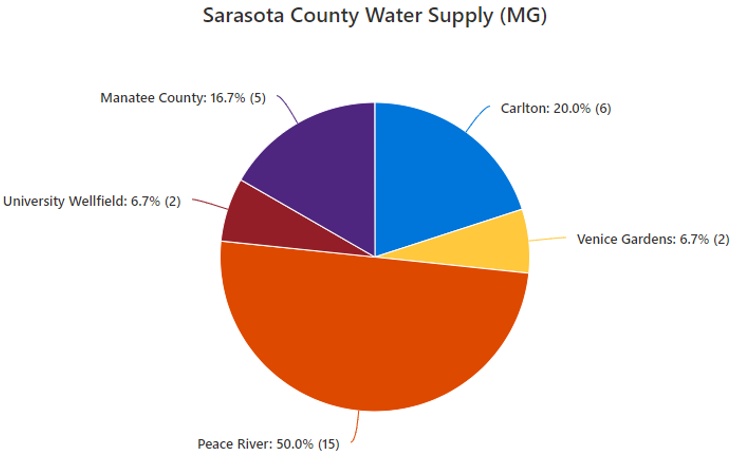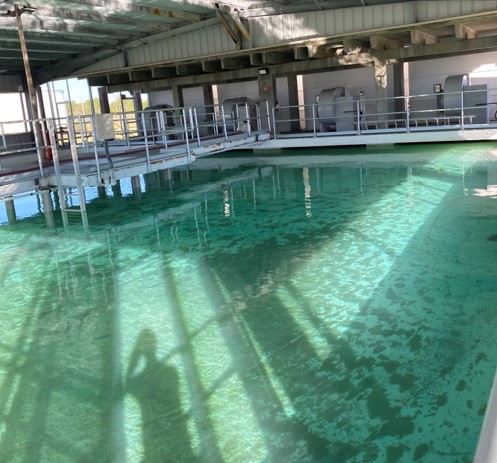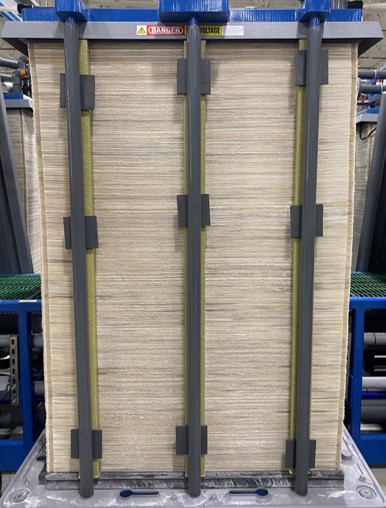Sarasota County is privileged to source its drinking water from diverse outlets, combining surface and well water to cater to the county’s needs. The Peace River Manasota Regional Water Supply Authority contributes roughly half of the county’s drinking water. The Peace River Manasota Regional Water Supply Authority draws surface water from the Peace River to serve Sarasota, Charlotte, and Desoto counties. Additionally, a partnership with Manatee County Utilities supplies about 15% of the county’s water, treating a mix of surface water from Lake Manatee and well water from the Duette wellfields. Sarasota County also draws and treats well water, primarily from the wellfields at T. Mabry Carlton Jr. Water Treatment Facility, located within the protected T. Mabry Carlton Jr. Memorial Reserve.

Treatment Process
Surface water undergoes a meticulous treatment process to ensure its safety and quality for public consumption. Powdered Activated Carbon (PAC) is employed to remove naturally occurring taste and odor compounds, enhancing the overall palatability of the water. Biological Filtration may be utilized along with PAC to further reduce taste and odor. In Florida, taste and odor compounds vary seasonally in drinking water sourced from surface waters. This is due to naturally occurring compounds produced by phytoplankton. These phytoplankton may increase in number in response to weather and environmental condition. Taste and odor is categorized as a “secondary contaminant”. This means that only the water’s aesthetics may be impacted – not its safety or quality.

Solid contaminants are removed from surface water through settling, coagulation, and filtration. Surface waters, by nature, will contain sediment, particulates, and other solid contaminants that must be removed during the treatment process. The largest solid contaminants are naturally removed from the water through settling. By collecting, slowing, and holding the water in a settling tank, large particles and other solid contaminants will begin to settle out of the water and collect on the bottom of the tank.
After settling, a process called coagulation prepares the remaining solid contaminants to be removed from the water through filtration. During this phase, flocculants and polymer compounds work synergistically to attract and bind suspended particles, forming larger clumps. These clumps are easier to filter out during the subsequent filtration step, ensuring that even the finest particulates are effectively removed. The water is then passed through fine filters to remove any remaining particulate matter.

Well water undergoes a simpler treatment process, as groundwater is not likely to contain suspended solid contaminants to the degree of flowing surface water. Aeration is employed to eliminate naturally occurring sulfur compounds, responsible for the characteristic “eggy” aroma. The well water is further treated through settling and filtration. To address the mineral content imparted by Florida’s limestone aquifers, Sarasota County Utilities utilizes Electrodialysis Reversal (EDR). This advanced process involves passing water through charged electrodes and stacked ionic membranes, effectively removing salts and minerals, resulting in clean, fresh well water. Sarasota County is home to one of the largest EDR facilities in the United States.
Filtered surface water and well water are then blended together. The blended water is disinfected with chloramines to ensure public health and safety. Orthophosphate is added to the water for corrosion control. Orthophosphate works to create a protective barrier between the water and the pipes through which it travels, reducing corrosion and any associated leaching of materials from pipes into the water. Chemical amounts and ratios are carefully calculated and monitored as they are added to the water, and then tested at several steps along the treatment process. At Sarasota County’s T. Mabry Carlton Jr. Water Treatment Facility, drinking water from several stages of the treatment process is checked 6 times daily for pH, chlorine (free and total), ammonia, phosphate, conductivity, turbidity, and temperature. “Finished water” is also collected from points throughout the county-wide distribution system for regular safety and quality checks. Drinking water is screened daily for microbial contaminants. Water Quality Technicians and Treatment Facility Operators work tirelessly around the clock to test and monitor municipal drinking water. All chemical and microbial analyses are conducted by trained professionals in a National Environmental Laboratory Accreditation Conference (NELAC) certified laboratory. NELAC labs are subject to random State audits. Analyses and test results are carefully monitored for Quality Control, which includes standard checks and blanks run with samples to ensure analytical accuracy. Test results are meticulously logged and reported to State departments for oversight.
Drink Local: A Surprising Way To Save
“Drinking Local” is a responsible choice for you and for the the planet! Some figures suggest that it takes about 1.5 liter of water to produce a standard 0.5 liter bottle of drinking water (1). That means that for every bottle of water you drink, there may be a hidden cost of twice that amount of water used to manufacture the plastic bottle and transport it from the factory to your fridge. All of that hidden water also adds up to out-of pocket cost paid by you, the consumer! A 2001 publication estimates that bottled water is on average 500 to 1,000 times more expensive per volume than tap water (2)! Over time that cost can really add up. The drinking water supplied by your local municipality, however, is often charged on a blocked system where customers are charged per 1,000 gallons of water used. This means that the amount of water you drink in a given month will be unlikely to increase your water bill by any noticeable amount.
Opting for tap water over bottled water can also benefit the environment! Plastic pollution is a global problem, and single-use plastic water bottles are common among this waste. Plastics in our environment don’t degrade over time the way natural materials do. Plastic waste accumulates in our environment and has even been observed forming large floating islands in the ocean. While plastics may “break down” due to environmental conditions, these plastics don’t disappear but simply break into smaller and smaller pieces (3). These small pieces of plastics are referred to as “microplastics” and have been found in water samples taken from around the world. Scientists still don’t quite understand the full environmental impacts of tiny microplastics, but we do know that some wildlife will mistakenly consume plastic waste. Animals cannot digest plastic and often have difficulty passing the debris from their system. This can cause a buildup of plastic in the animal’s digestive system, and may ultimately reduce the animal’s apatite and lead to starvation.
One small choice can have big impacts on the environment and your wallet! Ditch the plastic bottle, save a few bucks, and drink your local tap water instead of buying bottled. Sarasota County Utilities provides drinking water that meets and even exceeds State and Federal drinking water standards, ensuring that you are receiving a clean, safe product. Some folks, however, prefer the taste of water with additional filtration. If you prefer the taste of filtered water, consider investing in a carbon filter that attaches to your sink faucet. Refrigerator dispensers with carbon filters and carbon filter water pitchers work just as well to freshen up your water.
- Kennedy, Understanding Your Drinking Water 2016
- Ferrier, BOTTLED WATER: UNDERSTANDING A SOCIAL PHENOMENON. 2001
- Manes, Plastics and Earth’s Ocean: Part 2 2021
During the preparation of this work the author(s) used OpenAI ChatGPT in order to edit this post for conciseness and readability. After using this tool/service, the author(s) reviewed and edited the content as needed and take(s) full responsibility for the content of the publication.
Resources
Sarasota County Public Utilities: Water Division
Sarasota County Utilities Consumer Confidence Report
Peace River Manasota Regional Water Supply Authority
Peace River Manasota Regional Water Supply Authority Consumer Confidence Report
Manatee County Utilities Water Services
Manatee County Utilities Consumer Confidence Report
 1
1
